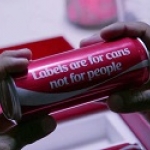NAMP News
Read the latest arts news
It feels weird admitting this, too: We as a Buffer marketing team—working on a product that helps people succeed on social media—have yet to figure out how to get things working on Facebook (especially), Twitter, Pinterest, and more.
And that’s super scary to admit.
I love attending digital marketing conferences and professional development workshops. The conversations with peers and masters of the digital trade never fail to inspire me. Between multiple hits of caffeine and favoriting hilarious conference Tweets, my head fills with big ideas...video trailers...user-generated content...audience engagement.
Marketers have been hearing this pretty regularly since 2008. And while the prediction has become old news, the trend toward a more mobile world continues to evolve. So how can we better understand our mobile site visitors to create a better experience for them? With Google Analytics, of course.
Four years ago, home decor brand One Kings Lane launched a typical blog where staffers would pen two or three posts per week. Traffic was decent, but the site had yet to really take off in a way that would make the publishing efforts stand out.
There’s always something new to learn, an innovative strategy to uncover and a potentially successful hypothesis to use in an experiment. But in the midst of the ever-evolving infrastructure of the online world, one thing is becoming increasingly clear: visual content is the way of the future.
In the Middle East, Coca-Cola's is looking to promote a world without labels and prejudices by starting with its iconic can and ditching its own logo. Of course, the label is still red and has the white swirly bit so no one's going to mistake it for a Pepsi but this is metaphor, people.
It’s tough to get millennials to think about their finances. Understandably, they can’t be persuaded to trudge through complex jargon, let alone plan for something that might not affect them until retirement. So how do you arm 3,000 financial representatives across the nation with the tools they need to reach this increasingly valuable audience?
All month long in October 2015, Curbed and National Trust for Historic Preservation are teaming up on #ThisPlaceMatters, a social campaign highlighting the most beloved places across America. Our motto at Curbed is "love where you live," which ties in succinctly with the National Trust's mission to highlight everyday buildings and places alongside those officially earmarked for historic preservation.
At the heart of every nonprofit is a story. Inspired by an idea, born from a moment, and created from experience, your nonprofit’s story is the foundation of your organization, and the platform from where you drive donor engagement, cement community involvement, and generate measurable change. For many nonprofits and their nonprofit websites, the intuitive approach would be to tell their story in the “About Us” section, where visitors go to learn about a nonprofit.
The theme of this conference is inclusion. All weekend, we've heard uplifting stories about amazing work you all are doing to involve people from all walks of life in museums. And yet. Here's my beef with inclusion: it's too good. No one is "against" inclusion. There is no other museum conference going on somewhere else in the world today where professionals are sharing proud case studies and helpful tips on how to exclude people. But museums do exclude people. All the time.















